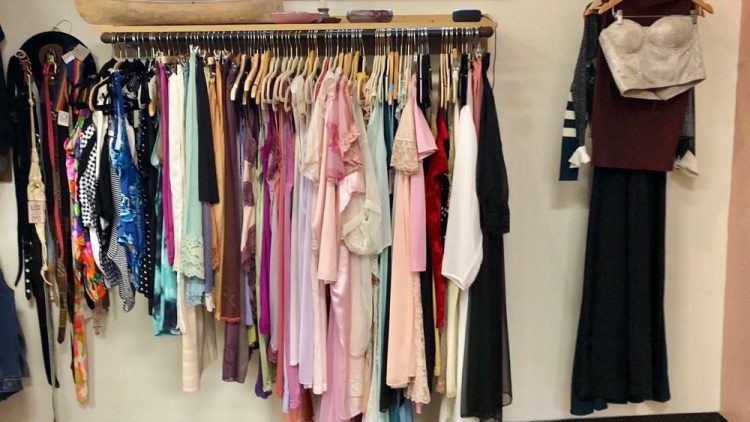Sustainable Fashion: Embracing Eco-Conscious Style
Sustainable fashion has emerged as a powerful movement within the fashion industry, responding to growing concerns about the environmental and ethical impact of fast fashion. As consumers become more conscious of the consequences of their clothing choices, sustainable fashion offers a responsible and ethical alternative. This article explores the concept of sustainable fashion, its key principles, the impact it has on the environment and society, and the ways individuals can embrace eco-conscious style.
Understanding Sustainable Fashion
Sustainable fashion is a holistic approach to clothing production that considers the environmental, social, and economic impact of the entire fashion supply chain. It seeks to minimize waste, pollution, and exploitation while promoting ethical practices and responsible consumption.
The key principles of sustainable fashion include:
1. Ethical Production: Sustainable fashion prioritizes fair labor practices, ensuring that garment workers receive fair wages and work in safe and healthy conditions. Brands that uphold ethical production values promote social justice and support the well-being of workers.
2. Eco-Friendly Materials: Sustainable fashion encourages the use of eco-friendly and renewable materials, such as organic cotton, hemp, and recycled fabrics. These materials have a lower environmental footprint compared to conventional textiles, which often rely on harmful chemicals and excessive water usage.
3. Zero Waste and Circular Fashion: Sustainable fashion aims to reduce waste by implementing zero-waste design techniques and promoting circular fashion. Circular fashion focuses on creating products that can be recycled or repurposed at the end of their life cycle, closing the loop on waste.
4. Conscious Consumption: Emphasizing quality over quantity, sustainable fashion encourages consumers to make mindful and intentional purchases. Investing in well-made, durable pieces rather than constantly buying cheap, disposable fashion items leads to reduced overall consumption.
The Impact of Sustainable Fashion
1. Environmental Benefits: Sustainable fashion significantly reduces the environmental impact of the fashion industry. By using eco-friendly materials and adopting responsible production practices, it minimizes water usage, chemical pollution, and carbon emissions.
2. Social Responsibility: Ethical production in sustainable fashion ensures that garment workers are treated fairly and work in safe conditions. Brands that prioritize social responsibility contribute to improved labor standards and empower workers in the supply chain.
3. Waste Reduction: Sustainable fashion seeks to minimize waste through efficient design and recycling initiatives. This approach diverts clothing from landfills and contributes to a more circular and sustainable fashion system.
4. Conservation of Resources: Eco-conscious fashion reduces the consumption of non-renewable resources, such as petroleum-derived fabrics, and conserves natural resources like water and land.
Embracing Sustainable Fashion: Tips for Eco-Conscious Style
1. Educate Yourself: Learn about sustainable fashion and familiarize yourself with eco-friendly materials and ethical brands. Understand the impact of the fashion industry on the environment and society to make informed choices.
2. Choose Quality over Quantity: Invest in well-made, durable clothing that will last longer and withstand frequent wear. Opt for classic styles that are timeless and versatile, allowing you to create various outfits.
3. Second-Hand Shopping: Embrace thrift shopping and consignment stores to find unique and pre-loved clothing pieces. Buying second-hand reduces the demand for new clothing production and extends the life of existing garments.
4. Support Sustainable Brands: Seek out fashion brands that prioritize sustainability and ethical practices. Look for certifications such as Fair Trade, Global Organic Textile Standard (GOTS), and OEKO-TEX, which ensure ethical and eco-friendly production.
5. Rent and Swap: Explore clothing rental services or participate in clothing swaps with friends to access new styles without contributing to overconsumption.
6. Repurpose and Upcycle: Get creative and repurpose old clothing items into new and unique pieces. Upcycling gives new life to old clothes, reducing waste and promoting creativity.
7. Take Care of Your Clothes: Extend the life of your clothing by following proper care instructions. Wash garments with cold water, avoid over-drying, and mend any minor damages to keep them in good condition.
Sustainable fashion is not just a trend; it is a responsible and ethical movement that addresses the environmental and social challenges of the fashion industry. By embracing eco-conscious style, individuals can contribute to positive change and minimize their impact on the planet and society.
As consumers become more conscious of their clothing choices, the demand for sustainable fashion continues to grow. By supporting ethical and eco-friendly brands, choosing quality over quantity, and adopting mindful consumption practices, individuals can play a vital role in shaping a more sustainable and responsible fashion future. Sustainable fashion is not only about what we wear; it is a statement of our values and a step towards a more responsible and compassionate fashion industry.










